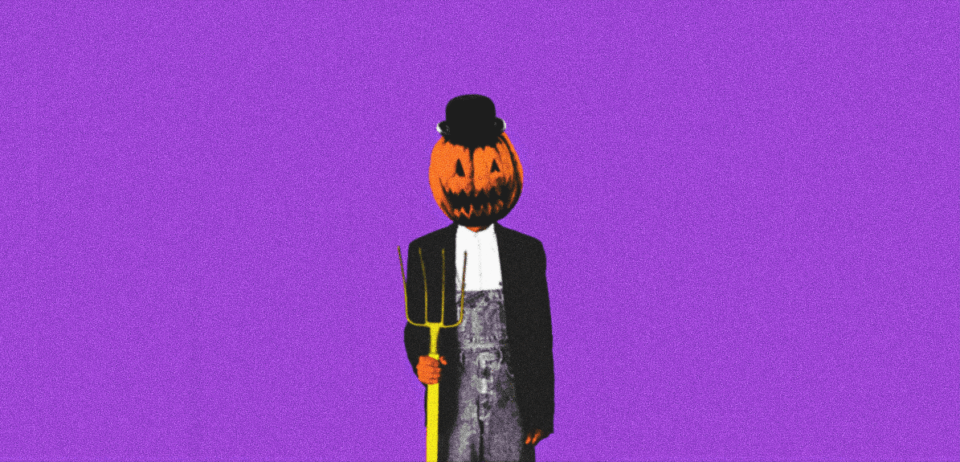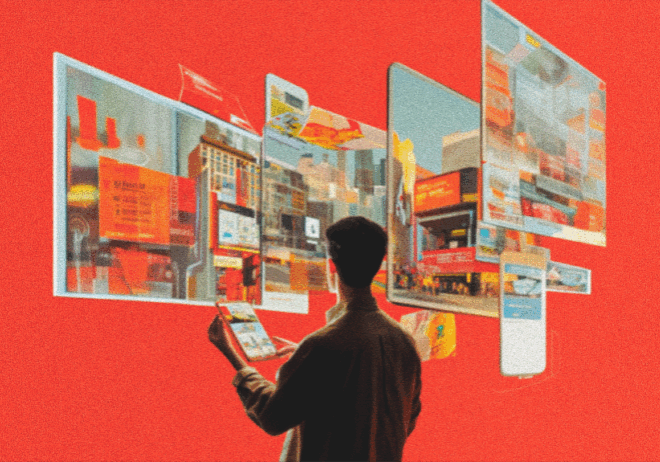
October Marketing Rundown: 6 Must-Know Stories That Shaped the Month
In today’s trickle-down (trick-or-treat) economy, horror feels natural, almost routine. Yet, October’s marketing campaigns and developments hint that the month might not be as squeezed out as expected, especially being the first of the year’s final quarter.
From Halloween-themed campaigns to political branding, the market seems caught in the eye of Melissa. Amid talk of a government shutdown, the U.S. market has never found more creative ways to entertain consumers.
But can it actually turn that attention into conversions? That’s a longer conversation.
While we prepare for our next story on how the shutdown affects buyer sentiment, here are some standout stories that capture the current mood of professionals and companies alike.
Adobe launches AI Foundry, brands get creative boost for marketing
Adobe has just unveiled AI Foundry, a new platform that enables brands to train their own custom AI models using Firefly technology. This is big for every creative department.
According to Adobe, the Foundry will enable companies to integrate their own brand assets—logos, visuals, videos, and tone—into models that generate on-brand content across images, videos, audio, and 3D. The result? Faster content creation that doesn’t water down brand identity.
This move can alleviate a marketer’s frustration with generic AI tools that fail to capture the brand’s nuance. With Foundry, Adobe is betting that personalization at the model level will become the new differentiator.
Brands can now automate creative workflows, scale visual storytelling, and maintain a consistent tone across campaigns.
EU antitrust fire over Google’s ‘AI Overview Summaries’ after complaints
The Google AI Overviews feature, which includes AI-generated summaries at the top of Google Search results, has attracted attention in the EU.
A coalition of independent European publishers, led by the Independent Publishers Alliance, has filed an antitrust complaint with the European Commission, arguing these summaries use publisher content without permission and siphon off traffic and ad revenue.
If users get their answer from a quick AI snippet, they can skip your brand or publisher site entirely. It could shift the media’s buying landscape and force a rethink of search-to-site funnels. Publishers claim they can’t opt out of this feature without risking being buried in search results.
For brands and agencies, this means search-strategy risk is real—and trust between platforms and content creators is under pressure.
WPP strikes $400M AI pact with Google, new CEO bets big on automation
WPP’s new CEO, Cindy Rose, isn’t wasting time making her mark. The ad giant has signed a five-year, $400 million expansion deal with Google, securing access to Gemini, Veo, and other AI tools across its global network.
For marketers, this means the world’s largest ad group is going all-in on AI-assisted production—think faster campaign turnarounds, automated creative workflows, and sharper measurement models.
WPP plans to integrate Google’s AI stack into its WPP Open platform, streamlining how agencies create, optimize, and track content performance in real-time.
The move signals a competitive nudge to other holding companies racing to define their AI strategies. Rose’s bet could mark WPP’s pivot from traditional creative muscle to data-driven creative automation.
Kiernan Shipka’s Goodnight, Phone’ turns horror into sleep-tech marketing
The sleep-wellness brand Hatch has launched a bold move with its new campaign “Goodnight, Phone,” starring Kiernan Shipka and styled as a faux horror movie trailer.
The campaign dramatizes the midnight scroll-through-doom scenario we all know too well. Shipka plays a woman whose phone habit spirals into terror, making the device itself the antagonist—and introducing Hatch’s smart sleep clock as the subtle hero.
The move raises the bar for marketing in wellness tech: story first, product second.
The gem here is in how Hatch blends genre storytelling with product relevance in October (Cue to Halloween). Instead of a straightforward product demo, they’ve crafted a distinct narrative.
It is around anxiety, screen addiction, and the desire for real rest. It touches emotion, stakes, and defines a cultural moment.
Rebranding of PepsiCo repositions the brand, hints at a shift from Soda-maker
PepsiCo just unveiled its first major corporate rebrand in nearly 25 years. The move signals a shift from a soda-centric image to highlighting its full food-and-beverage portfolio of over 500 brands.
A redesigned “P” icon surrounded by symbols for food grains, a water drop, and a green leaf—reflecting the company’s sustainability push under its pep+ initiative. A new tagline: “Food. Drinks. Smiles.” Apparently, it’s not just about cola anymore. Brand visual refresh with earth-tones, lowercase typography, and a more approachable look.
The rebrand isn’t just cosmetic. It tells marketers that PepsiCo wants to reposition itself as a platform for brands, not just a soda maker. The rollout begins now, starting with digital channels, followed by packaging and global touchpoints.
Mars goes full Halloween with multi-channel madness
After parting ways with WPP and joining forces with Publicis, Mars is unleashing a full-scale, cross-channel takeover led by its top brands: M&M’s, Skittles, and Twix.
And with Halloween falling on a Friday for the first time in over a decade, timing couldn’t be sweeter.
From short-form sitcom-style content to podcast tie-ins and pop-up experiences, Mars is treating every touchpoint like a trick bag of creativity. M&M’s revives its “Halloween Rescue Squad” with a cameo from Nicole “Snooki” Polizzi, while Skittles goes paranormal with a ghost roommate sitcom that extends into podcast integrations. Twix, not one to play it safe, merges holidays in a cheeky “Hallowmas” campaign featuring limited-edition drops and a Brooklyn “Zombie Claus” grotto experience.
For marketers, Mars’ Halloween playbook is a masterclass in timing, storytelling, and cultural sync. When the message is consistent and the execution fearless, even a familiar holiday can feel brand new.


